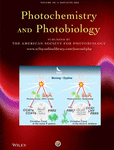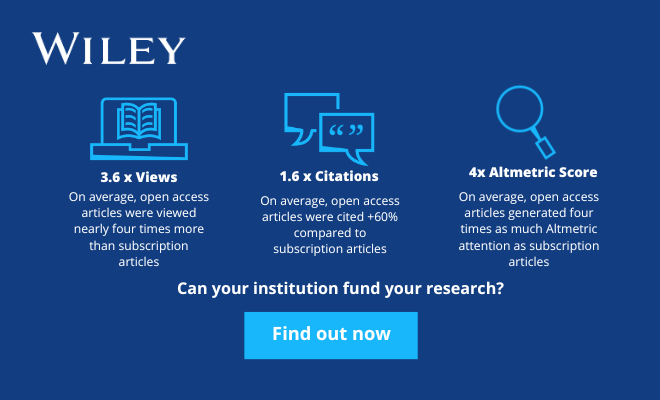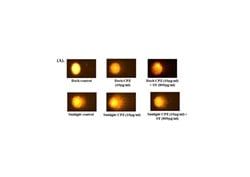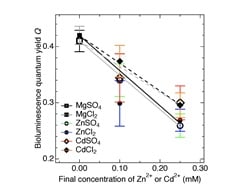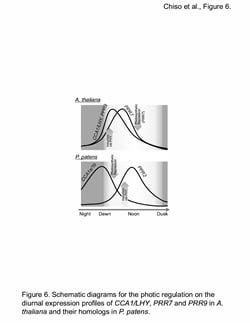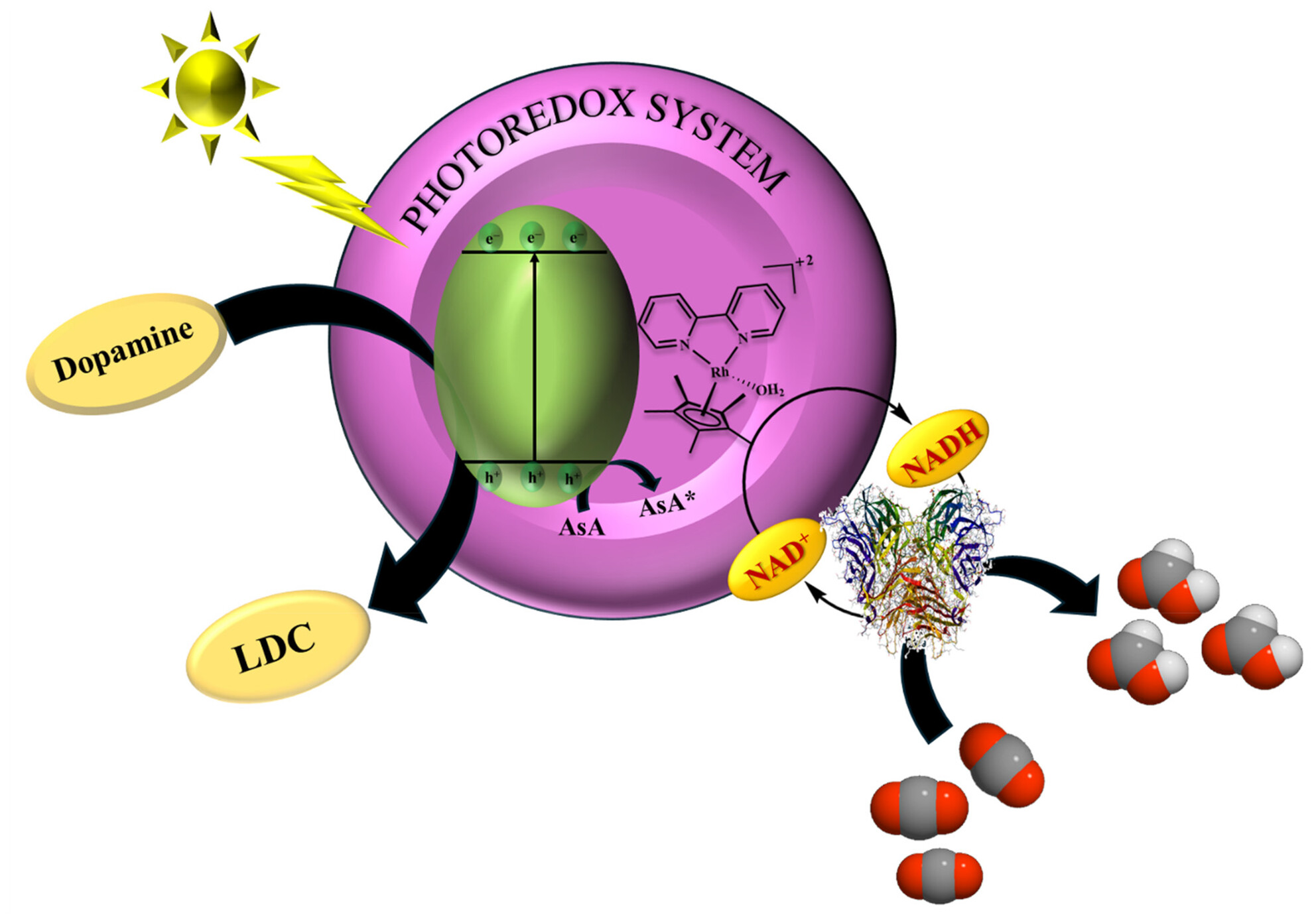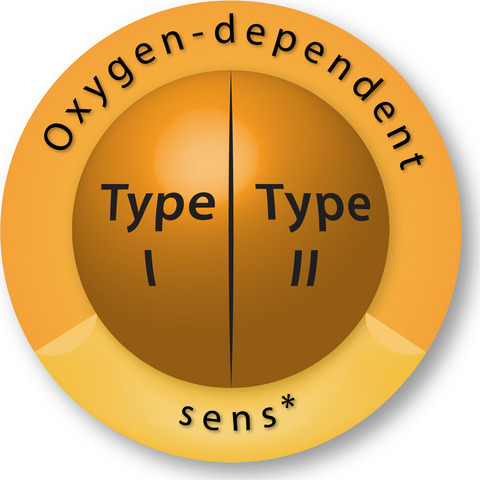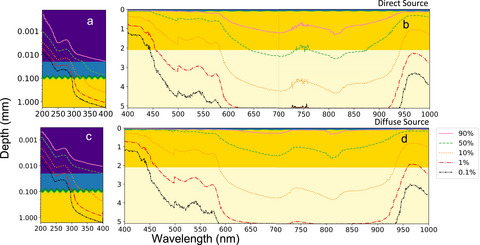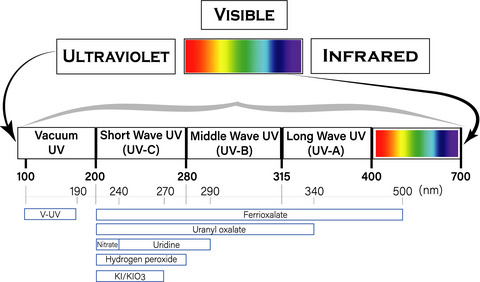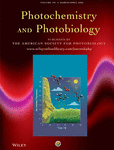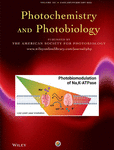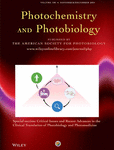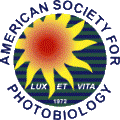Edited By: Alexander Greer
Photochemistry and Photobiology publishes research articles and reviews on current topics in photoscience. Topics span from the primary interaction of light with molecules, cells, and tissue to the subsequent biological responses. Our interdisciplinary research includes the fields of chemistry, physics, biology, and medicine.
We also publish special issues focusing on specific areas of recent interest in photoscience. Photochemistry and Photobiology is the official journal of the American Society for Photobiology.
Journal Metrics
- 5.8CiteScore
- 2.5Journal Impact Factor
- 49%Acceptance rate
- 24 days Submission to first decision
Featured Articles
Articles
Enhancement of pharmacotherapeutic activity of antibiotic “Amphotericin B” due to its photosensitizing properties
- 20 July 2025
Graphical Abstract

In this work, antifungal medication “Amphotericin B” was used in combination with super-bright LEDs peaking at 405 nm to enhance its pharmacological activity. Amphotericin B exhibits a strong photodynamic effect when exposed to light both in vitro (BGM cells) and in vivo (rats with contact dermatitis). Amphotericin B-mediated APDT reduces twofold the titer of Candida albicans in vivo.
Polo-like kinases and UV-induced skin carcinogenesis: What we know and what's next
- 9 July 2025
Graphical Abstract
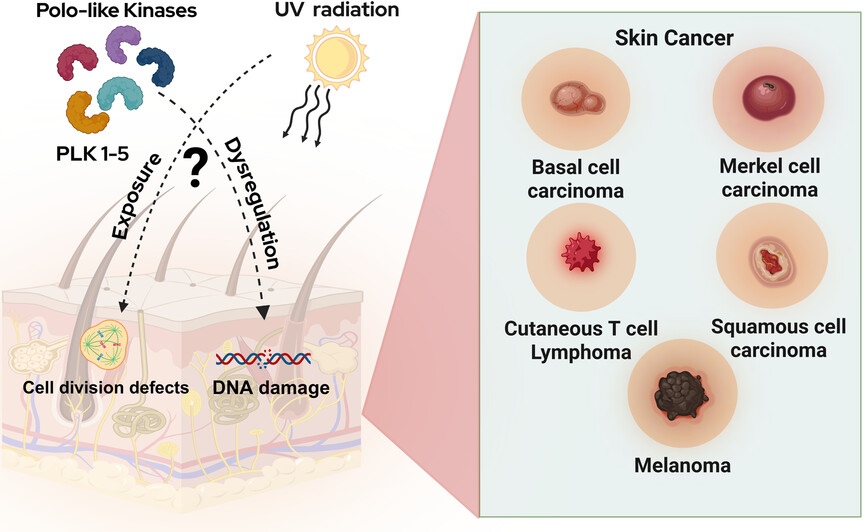
The polo-like kinase (PLK) family plays distinct and critical roles in the regulation of cell cycle progression, and its dysregulation has been implicated in various cancers. Ultraviolet (UV) radiation is a well-established environmental factor in the development of skin cancer. While interactions between UV exposure and PLK family members have been reported in other cancer types and in normal tissues, their specific interplay in the context of skin cancer remains poorly understood. In this review, we discuss that similar signaling pathways involving PLKs may be disrupted in skin cancer cells, potentially contributing to unchecked cell proliferation and metastatic behavior. The accompanying figure was created using BioRender.
222 nm far-UVC light and skin health: Assessment of DNA damage across different skin types
- 9 July 2025
Graphical Abstract
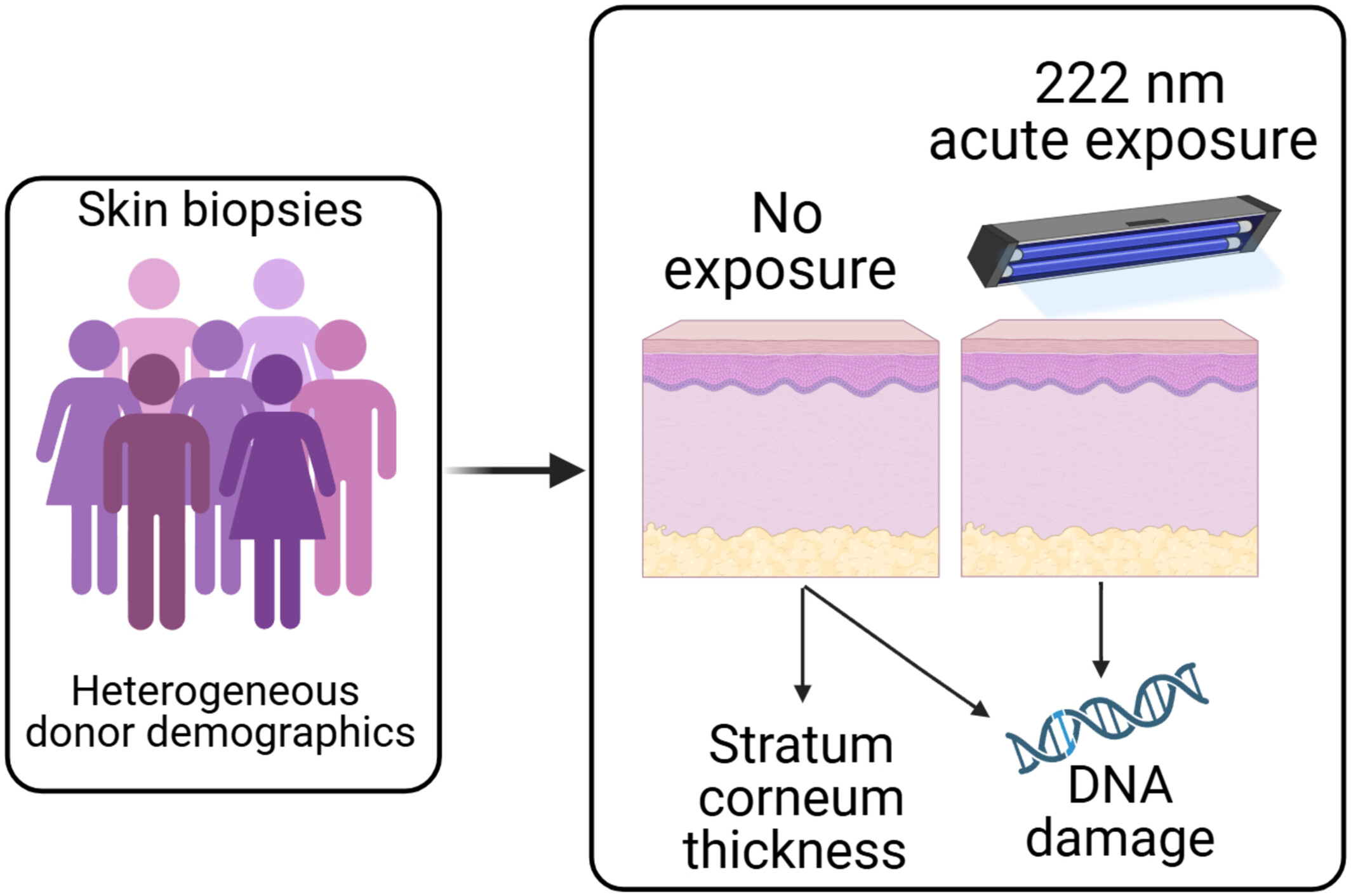
Germicidal 222 nm far-UVC has been proposed as an effective technology for pandemic control that can be used in indoor venues even when people are present. 222 nm light is not predicted to damage skin because it is primarily absorbed by the proteins in the superficial stratum corneum of the epidermis. Here, the stratum corneum thickness was measured in unexposed live abdominal skin biopsies as a function of selected donor demographics. In addition, the induction of DNA damage following an acute exposure from 222 nm light was analyzed as a function of donor demographics.
Immunomodulatory effects of photodynamic therapy for skin cancer: Potential strategies to improve treatment efficacy and tolerability
- 4 July 2025
Graphical Abstract
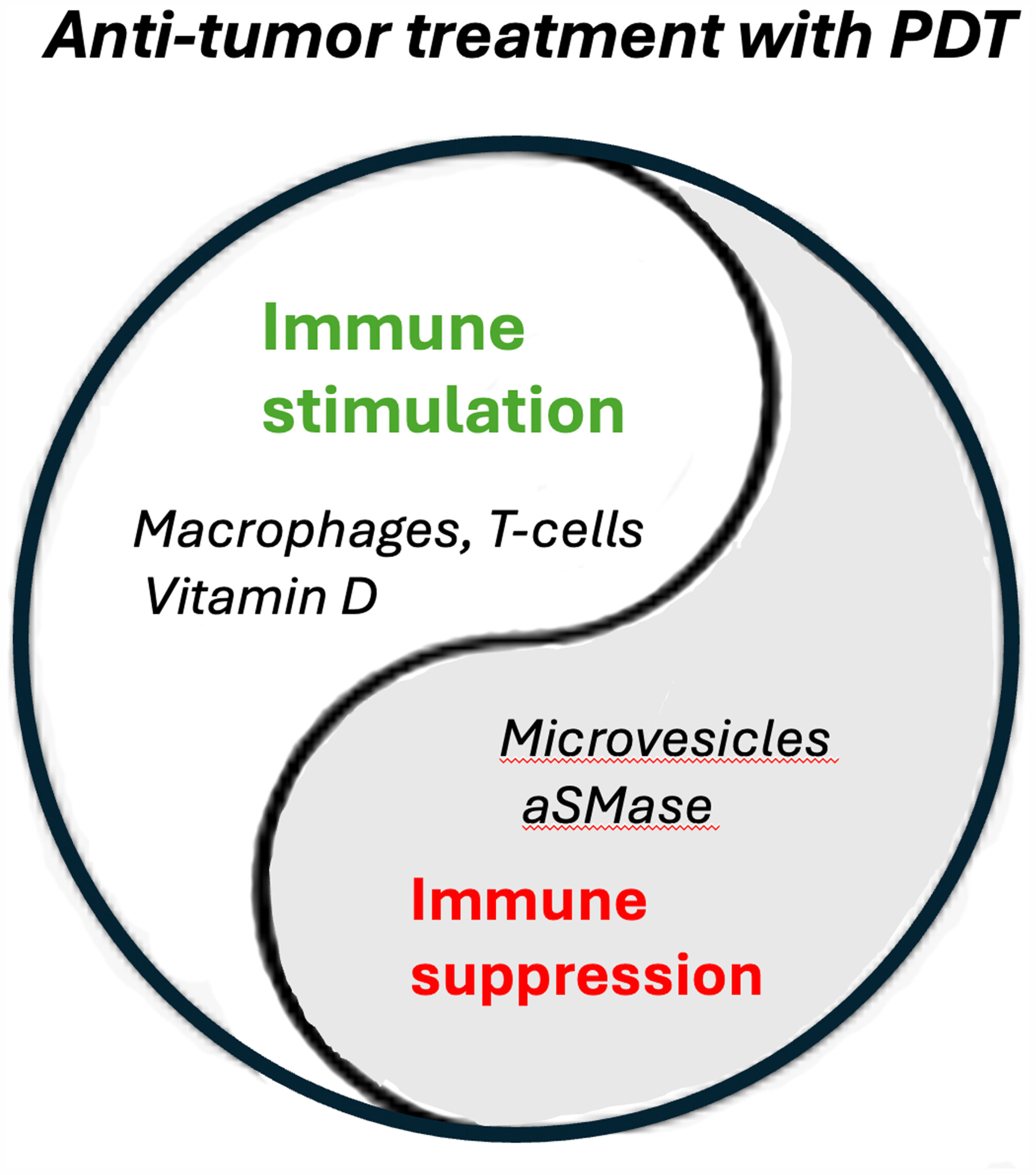
Photodynamic therapy (PDT) is a nonscarring treatment modality that is widely used for skin cancers and early squamous precursor lesions. PDT was previously thought to work primarily by killing cancer cells directly (via apoptosis or necrosis). However, more recent work indicates that a significant mechanism for PDT is the stimulation of anti-cancer immunity. Unfortunately, PDT-induced anti-tumor immunity is accompanied by the induction of immunosuppression, which can potentially counteract the beneficial effects of PDT. In this review, the current state of knowledge about these opposing immunological forces is presented.
Solar-driven photocatalytic system for CO2 fixation and conversion of dopamine into indole derivative
- 2 July 2025
The following is a list of the most cited articles based on citations published in the last three years, according to CrossRef.
The Protective Role of Melanin Against UV Damage in Human Skin†
- 539-549
- 16 November 2007
Type I and Type II Photosensitized Oxidation Reactions: Guidelines and Mechanistic Pathways†
- 912-919
- 13 January 2017
Mechanisms and Mitochondrial Redox Signaling in Photobiomodulation
- 199-212
- 22 November 2017
Graphical Abstract
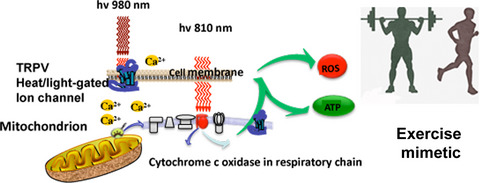
Photobiomodulation uses red or NIR light to stimulate healing and regeneration in tissue. The primary chromophores are cytochrome c oxidase in mitochondria and light/heat-gated ion channels. Both mechanisms lead to generation of reactive oxygen species that can activate transcription factors and may act as an exercise mimetic.
Light Sources and Dosimetry Techniques for Photodynamic Therapy†
- 280-294
- 31 January 2020
Graphical Abstract
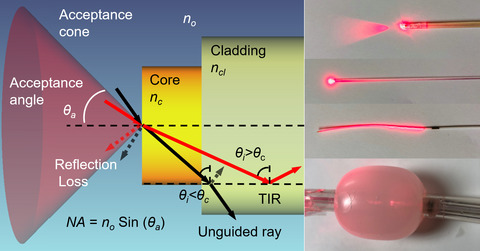
Effective treatment delivery in photodynamic therapy (PDT) requires careful coordination of the light source (e.g. lasers, light-emitting diodes and lamps), photosensitizer and delivery device (e.g. optical fiber-based devices) appropriate to the target tissue (e.g. geometry of minimally accessible areas). Treatment light undergoes scattering and absorption based on the optical properties of the tissue, for example, most tissue scatters light, but highly pigmented areas will absorb light, especially at short wavelengths. We summarize the basic physics of light sources and describe methods for determining the dose delivered to the patient.
Depth Penetration of Light into Skin as a Function of Wavelength from 200 to 1000 nm
- Photochemistry and Photobiology
- 974-981
- 26 October 2021
The Protective Role of Melanin Against UV Damage in Human Skin†
- Photochemistry and Photobiology
- 539-549
- 16 November 2007
Ozone Generation by Ultraviolet Lamps†
- Photochemistry and Photobiology
- 471-476
- 3 February 2021
Graphical Abstract
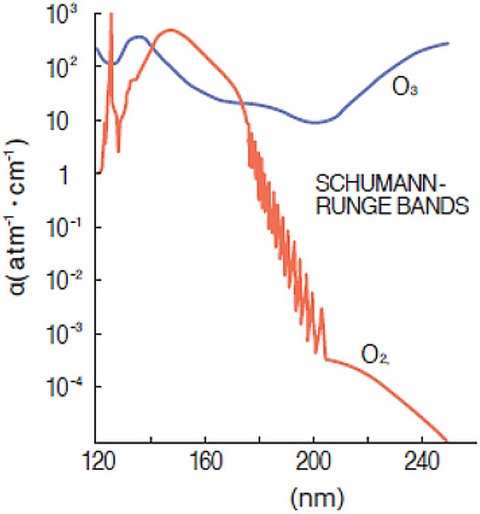
The COVID-19 pandemic has generated great interest in ultraviolet germicidal irradiation (UVGI) as a means to disinfect air and surfaces. The development of shorter-wavelength UV-C lamps, such as 222-nm lamps, has led to concerns about the UV-C generation of ozone. It is known that wavelengths below 240 nm more readily generate ozone. However, there is a great misunderstanding about the actual generation and dissipation of ozone molecules by UV-C lamps. An overview of the ozone generation of various UVC light sources is presented to give users a better understanding of risk and how to control ozone when employing UV-C lamps.
Database of Absorption and Fluorescence Spectra of >300 Common Compounds for use in PhotochemCAD
- Photochemistry and Photobiology
- 290-327
- 22 November 2017
Graphical Abstract
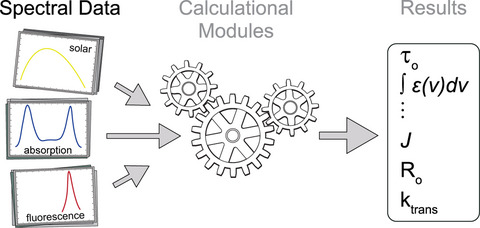
The availability of absorption and fluorescence data (with ε and Φf values) is essential for for diverse studies in photochemistry including informed molecular design of photofunctional molecules. Such spectra for 339 compounds (spanning the ultraviolet, visible, and near-infrared spectral regions) have been assembled (339 absorption, 213 fluorescence spectra) in a database that is rooted with >650 references to the original scientific literature. A small database of 31 solar spectra also is available. The databases are available for diverse photophysical and spectrometric calculations with PhotochemCAD or other programs.
Mechanisms and Mitochondrial Redox Signaling in Photobiomodulation
- Photochemistry and Photobiology
- 199-212
- 22 November 2017
Graphical Abstract

Photobiomodulation uses red or NIR light to stimulate healing and regeneration in tissue. The primary chromophores are cytochrome c oxidase in mitochondria and light/heat-gated ion channels. Both mechanisms lead to generation of reactive oxygen species that can activate transcription factors and may act as an exercise mimetic.
Type I and Type II Photosensitized Oxidation Reactions: Guidelines and Mechanistic Pathways†
- Photochemistry and Photobiology
- 912-919
- 13 January 2017
Light Sources and Dosimetry Techniques for Photodynamic Therapy†
- Photochemistry and Photobiology
- 280-294
- 31 January 2020
Graphical Abstract

Effective treatment delivery in photodynamic therapy (PDT) requires careful coordination of the light source (e.g. lasers, light-emitting diodes and lamps), photosensitizer and delivery device (e.g. optical fiber-based devices) appropriate to the target tissue (e.g. geometry of minimally accessible areas). Treatment light undergoes scattering and absorption based on the optical properties of the tissue, for example, most tissue scatters light, but highly pigmented areas will absorb light, especially at short wavelengths. We summarize the basic physics of light sources and describe methods for determining the dose delivered to the patient.
Assessing the safety of new germicidal far-UVC technologies
- Photochemistry and Photobiology
- 501-520
- 6 November 2023
Graphical Abstract
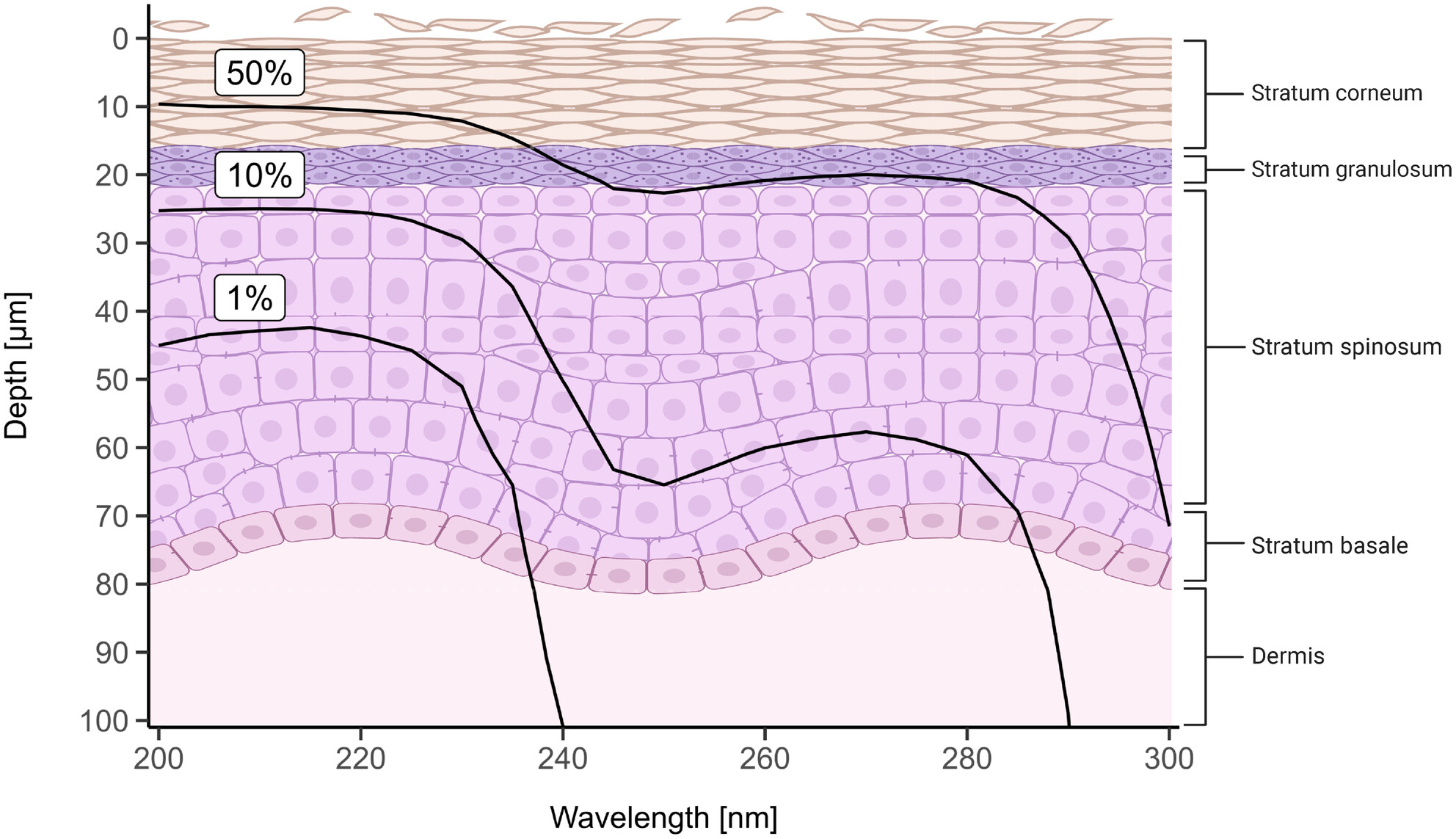
The COVID-19 pandemic underscored the crucial importance of enhanced indoor air quality control measures to mitigate the spread of respiratory pathogens. Far-UVC has emerged as a highly promising approach for indoor air disinfection. While current evidence supports using far-UVC systems within existing guidelines, understanding the upper safety limit is critical to maximizing its effectiveness, particularly for the acute phase of a pandemic or epidemic when greater protection may be needed. This review article summarizes the substantial present knowledge on far-UVC safety regarding skin and eye exposure and highlights research priorities to discern the maximum exposure levels that avoid adverse effects.
Practical Chemical Actinometry—A Review
- Photochemistry and Photobiology
- 873-902
- 14 June 2021
Materials Science Challenges in Skin UV Protection: A Review
- Photochemistry and Photobiology
- 779-797
- 30 December 2020
Graphical Abstract
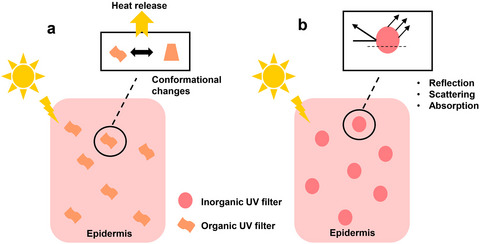
The sun is a vital component of our daily lives, from food to personal health and well-being. Lack of sun exposure has detrimental effects on our health. Likewise, overexposure to sun leaves us with long-term negative effects which may ultimately be worse than those caused by the lack of sun exposure. Sunscreen agents have been used for many years. Over time, UV filters have changed in hopes of being more effective; unfortunately, this has come at the cost of posing a risk to the consumer’s health and environment thus raising the question, is it really worthwhile using sunscreen?



